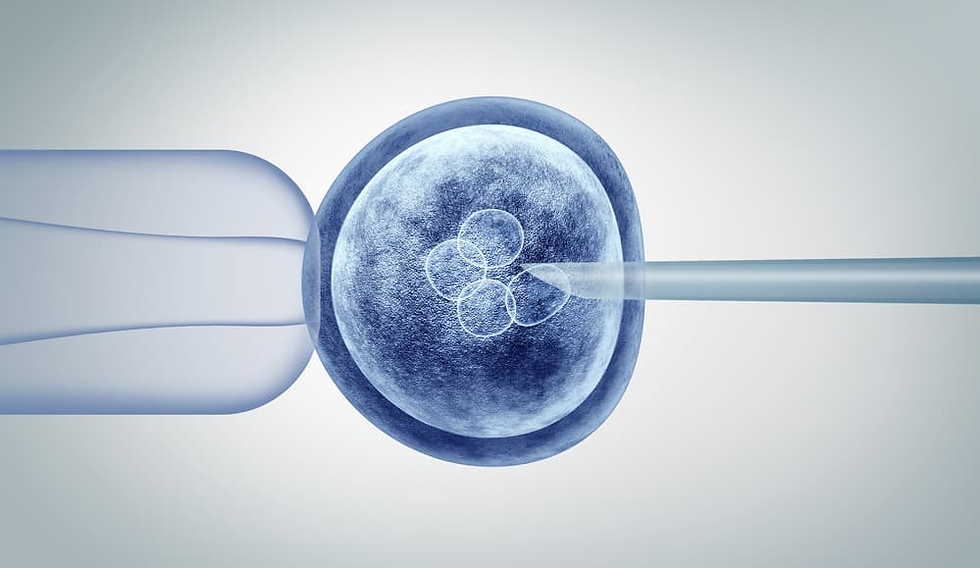Rewriting the Code of Life: The Promise of Prime Editing
- ScienceWise
- Apr 22
- 3 min read
Updated: Apr 24

The field of gene editing has witnessed incredible leaps in recent years, with tools like CRISPR-Cas9 revolutionizing our ability to precisely alter DNA. But while CRISPR-Cas9 acts like a pair of molecular scissors, making double-stranded breaks in the DNA, a newer technology is offering an even more refined and versatile approach: prime editing.
Imagine having molecular "word processors" instead of scissors for your genome. That's essentially what prime editing offers. Developed by Dr. David Liu and his team at the Broad Institute of MIT and Harvard, this groundbreaking technology allows for precise, targeted edits to DNA without the need for double-strand breaks (DSBs). This key difference unlocks a new realm of possibilities for correcting genetic defects and understanding fundamental biology.
Beyond Cut and Paste: A More Precise Approach
Traditional CRISPR-Cas9 systems rely on creating DSBs at the target site. While cells have natural repair mechanisms to fix these breaks, the process can be error-prone, sometimes leading to unintended insertions or deletions (indels). Prime editing elegantly bypasses this limitation.
Here's how it works in a nutshell:
A Modified Cas9: Prime editing utilizes a modified Cas9 enzyme that is nickase – it only cuts a single strand of DNA, minimizing the risk of unwanted mutations.
Prime Editing Guide RNA (pegRNA): This specially engineered guide RNA has two crucial parts:
A guide sequence that directs the Cas9 nickase to the precise target DNA sequence.
An extension containing the desired edit – a new DNA sequence that needs to be inserted.
Reverse Transcriptase: The modified Cas9 is also fused to a reverse transcriptase enzyme. Once the nick is made in the target DNA strand, the reverse transcriptase uses the RNA template in the pegRNA extension to synthesize a new DNA strand carrying the desired edit.
Strand Displacement and Repair: The newly synthesized DNA strand displaces the original strand, and the cell's natural DNA repair machinery recognizes and favors the edited strand, ultimately incorporating the precise change into the genome.
Why is Prime Editing So Exciting?
The ability to make precise edits without relying on DSBs offers several significant advantages:
Increased Precision and Reduced Off-Target Effects: By avoiding DSBs, prime editing significantly reduces the risk of unintended mutations at off-target locations in the genome, making it a potentially safer gene editing tool.
Versatility in Edit Types: Prime editing can perform a wide range of precise edits, including:
Point mutations: Changing a single DNA base.
Small insertions and deletions: Adding or removing short stretches of DNA.
Combinations of edits: Introducing multiple changes at a specific locus.
Addressing a Wider Range of Genetic Defects: Many genetic diseases are caused by specific point mutations or small indels. Prime editing holds the potential to directly correct these errors with high precision.
Potential for Therapeutic Applications: The enhanced precision and versatility of prime editing open up new avenues for developing gene therapies for a wide array of genetic disorders. Imagine directly correcting the mutation responsible for sickle cell anemia or cystic fibrosis without the risks associated with DSBs.
Advancing Basic Research: Prime editing provides a powerful tool for studying gene function and understanding the consequences of specific genetic changes in living cells and organisms.
The Journey Ahead: Challenges and Future Directions
While the promise of prime editing is immense, it's still a relatively new technology, and several challenges need to be addressed:
Efficiency: In some cell types and genomic locations, the efficiency of prime editing can be lower compared to traditional CRISPR-Cas9. Researchers are actively working on optimizing the system to improve its effectiveness.
Delivery: Efficiently delivering the prime editing machinery (the modified Cas9 and pegRNA) into target cells and tissues remains a crucial challenge for therapeutic applications.
Size Constraints: The prime editor complex is larger than the standard CRISPR-Cas9 system, which can pose challenges for certain delivery methods, like adeno-associated viruses (AAVs).
Long-Term Effects and Safety: As with any gene editing technology, thorough research is needed to fully understand the long-term effects and ensure the safety of prime editing for therapeutic use.
A New Chapter in Gene Editing
Despite these challenges, prime editing represents a significant leap forward in the field of gene editing. Its ability to precisely rewrite the code of life without the potentially harmful double-strand breaks opens up exciting new possibilities for treating genetic diseases and advancing our understanding of fundamental biology. As researchers continue to refine and optimize this groundbreaking technology, we can anticipate a future where the precise correction of genetic defects becomes a reality, ushering in a new era of genomic medicine. The word processors of the genome have arrived, and they are poised to rewrite the future of genetic therapies.



Comments